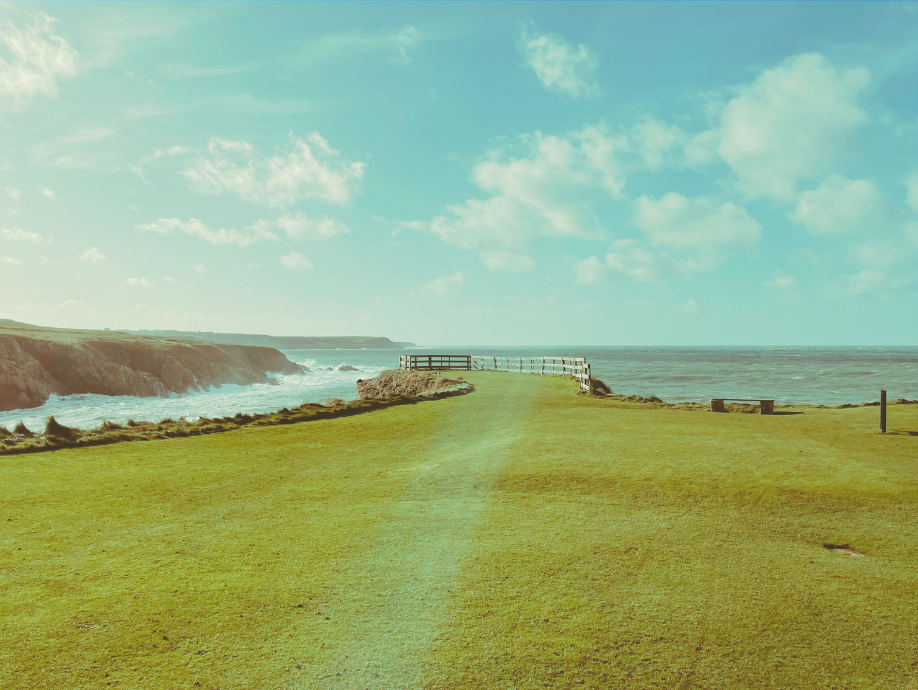
North Wales boasts some of the most stirring links golf in the UK. In Gwynedd, courses like Nefyn & District, Porthmadog, and Royal St. David’s combine coastal drama with historic charm — settings that pulsate long after play.
My brother gifted me a trip to Florence for my 30th birthday. There, in the cradle of the Renaissance, we enjoyed all the delights that flourishing city has to offer.
By day, the Tuscan sun thoughtfully shone down upon us as we gazed at the resplendent architecture and wandered the historic sandstone streets. Ever faithful, the sun was there to greet us after our lengthy visits indoors to marvel at galleries filled with the finest collections from the age of cultural rebirth.
By night, the warm airs lingered, regional wines flowed, and finger and a half thick cuts of Bistecca alla Fiorentina lulled us to sleep. Yes, the mosquitoes seized our bare ankles in our slumber, but it was a small price to pay to be in and amongst a city of such beauty. There aren’t many finer places to visit for lovers of arts and history.
In kind, I wished to honour my brother’s 30th. In recent years, he has developed a taste for golf, or rather, a craving for it, and so I thought what better than to stuff his gullet full of it. A November trip to the east coast of Fife in Scotland ought to do it.
We could sample their treasured links and walk about the town of St. Andrews and browse the golf shops for second-hand clubs, bobble hats, ball markers, and have ourselves a putting competition on The Himalayas… however, with all the rain this island attracts, we were forced to abandon our plans.
Our eyes in the north spoke of course closures and biblical floods. My brother had arrived home from London expecting a golfing jolly, but my hourly weather checks did nothing to prevent the heavy soakings, and I sort of fell into a state of despondency, affronted by the Gulf Stream’s path and its contemptible ways, but with Florence in mind, I was resolved to celebrate my brother’s birthday with enough golf that would at least satisfy him until the following week.
There was one area of our Isles that seemed less wet than others. It too had received a good soaking, yet its courses remained steadfast… for the time being: a storm was promised. Desperate, and choosing to simply disregard the forewarnings, I booked a hotel and some tee times, and we stuffed our holdalls with all things warm and waterproof, wiped the mud from our clubs, scoured the oblique tee marks from the bottom of our drivers, and set off early Wednesday morning for our lunchtime tee, ever wary of the dreadful weather headed our way.
Gwynedd
Gwynedd is the second largest county in Wales and lies in the north-west of the country. It remained independent from the Kingdom of England from the end of the Roman period until Edward I‘s conquest between 1277 and 1283; remnants of which can be seen in the castles of Caernarfon and Harlech.
During the Industrial Revolution, the slate industry rapidly developed, bringing about considerable wealth and cultural change to the area.
The county is covered by Eryri, a mountainous region and national park: home to the legend of the Welsh Dragon, the heraldic and national symbol of Wales. To the west is the Llŷn Peninsula, an Area of Outstanding Natural Beauty.
It was somewhere along this scenic stretch that we found our first course, Nefyn & District Golf Club.
Nefyn & District Golf Club
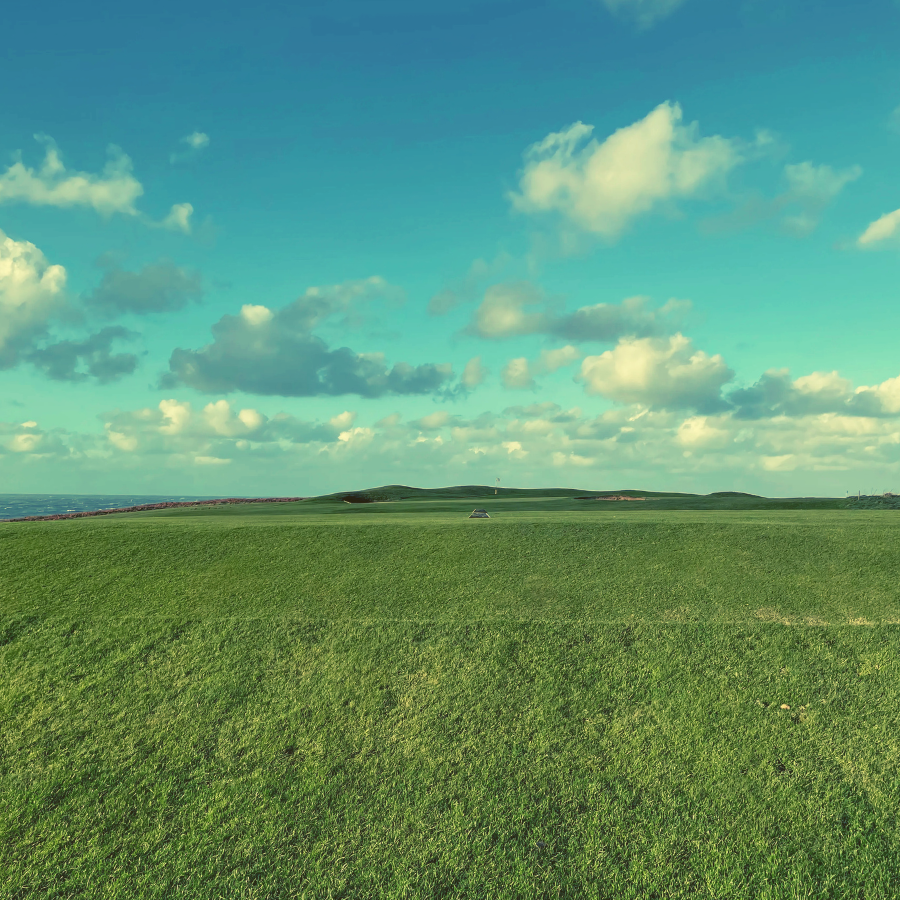
Nefyn’s original nine-hole layout was formed in 1907, with additional sets of nine added in 1912 and 1933. The Championship Course is a hilly, cliffside course that affords views of the sea from every hole. I had played there once before, some twenty years prior, on a school golf trip organised by teachers who had the good mind and wit about them to convince the school to hand over funds set aside for enrichment.
There were three things I remembered about that trip: gleefully hitting balls into the Irish Sea, a student driving the final green, and The Point.
Our drive to Wales was, as forecast, blighted by pelting rain and winds that near lifted the car from the road. It did, I’m sure, cross our minds to call ahead to check if the course was still open, but feigning ignorance was our decided course of action.
We filled our time with the kind of chatter that was no doubt frivolous to those outside the brotherhood, until, quite unexpectedly, twenty minutes or so from our destination, the rains ceased and the skies cleared, affording us staggering views of the Irish Sea, swathes of farmland, and an Iron Age hillfort.
It was, however, still blowing a gale when we arrived at the course. Though the sun was shining, it was not at all an appetising day for golf. The club was deserted, save for the pro and his two dogs, who excitedly greeted us as we entered the shop and, I think, closed the door behind us.
The pro seemed somewhat bemused by our journey to the edge of a wet and windy Wales. Explaining our visit and plans, the pro laughed off our optimism and assured us there would be no golf the next day, as the storm was due to hit that evening.
Stung by this stark warning, we bought a bucket of balls in defiance and headed to the range, where we ballooned four irons into an almighty headwind. With very little confidence gained from our looseners, and the weather prophecies from the pro, the Met Office, BBC News, and local radio stations echoing in our ears, we trudged, yes, already, to the first tee.
The opening hole at Nefyn is downhill, dramatically so, with no green in sight. Standing on the tee box, at the highest point of the course, there is little more than the crest of a fairway, an infinity fairway if you will, and a trapezium of sea to take aim at. The fairway is banked on either side, giving the hole the appearance of a water slide.
The green lies some 450 yards away, at the lowest part of the course. The aim, I suspect, is to hit a fair drive that catches the downslope of the fairway to leave a short approach to the green, but in such conditions, my brother and I were somewhat perplexed as to how exactly it was possible to even make a swing.
With a relentless nine o’clock wind pestering my back and underdeveloped legs, I was forced out of my address twice, much to the delight of my brother — camera rolling. On the third take, and aiming far left, outside the sea and towards a lone tree growing from the bank, my ball flew further left than I had hoped, where it remained, untouched by the wind.
My brother, amazed that the flight of my ball was not corrected, took aim at the same tree, but too, suffered a very similar result. The mightiest of winds will not fix the mightiest of pulls. Recovering our balls in the thick stuff, we also found the rest of the course and its wildly flickering flags. We poked our balls towards the green, neither of us threatening par.
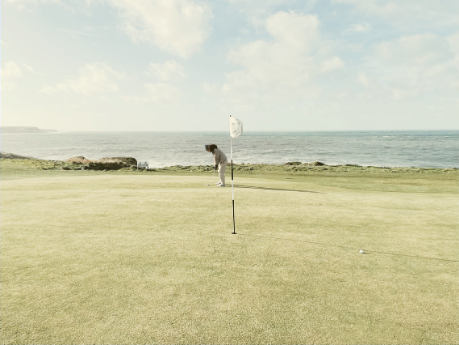
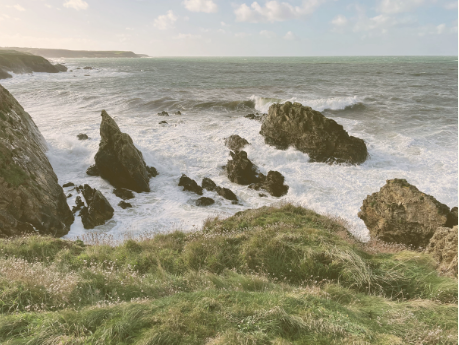
The next few holes are played along the fearsome cliffs: high above the white horses running amok below. All the room on these holes is left, which is where I happened to play most of my golf from. My brother was a little more daring, a little more open-faced — through chance or design — but was afforded the greater views of the crashing waves.
The rest of the course feeds itself across and up the hill, offering blind tee shots and demanding walks. The wind blew with tremendous force throughout; our conversations blown from our mouths before our words had the chance to escape our lips, but neither of us complained; in fact, our round was all the better for it — our scores mattering not a jot.
A well-struck shot knocked out of the air by the wind, or held aloft like a trophy, was all part of the fun. The wind can be maddening, but we enjoyed its company, as if it were a boisterous playing partner who we would talk fondly of, but perhaps not invite again.
Back at the car, we digested our expedition, recounted our round, and then set out once more: the Point beckoned.
You pay to play the Championship course at Nefyn, but The Point is free. Its nine holes, also known as ‘”The Old” or “The Blue”, are played on a narrow peninsula, high above the sea and the bay of Porthdinllaen.
The course is all at once playful, unrefined, terrifying, and silly: the most ludicrous of playgrounds for golfers. It demands carries over great expanses of treachery that tip your perception. A daring carry is a foolish one, and a safe line is cowardly.
My brother put half a dozen into the sea on the 4th. I imagine many others have fared much worse. The atrocious carries over chasms are followed by greens that straddle cliffs, or are tucked amongst rocks, or hidden on hilltops. If golf architects remodel the face of nature, then the Point is played from brow to chin, from nose to ear, from lip to lash.
It was from the pencil-thin peninsula that we spotted the serenity of Porthdinllaen Bay, a two-mile stretch of calm, sheltered from all but a north-westerly wind. The bay seemed untroubled, dozing almost, as my brother and I battled the tempest above.
The bay had once served as a fishing port, a shipbuilding site, and the home of navigation schools that launched the careers of hundreds of ships’ captains. The herring fishery brought prosperity to the area, and it is the herring — Nefyn beef — as it is locally known, that makes up the town’s coat of arms and the golf club’s flags.
The 7th tee of The Point sits adjacent to the steep path that takes you down to the bay and its persuasive Tŷ Coch Inn. It was from here, in the idyllic alehouse, that locals formed their plans for a golf course on the exposed headland.
Our hopes for a pint in the pub, for sanctuary, for inspiration, were scuppered by closing time, but, as we climbed back up the thigh-burning incline to the course, our hard-fought drinks mere memories of something not had, the warnings of bad weather that had tormented us for days once again echoed in our ears and propelled us to golf once more.
We played the last three holes in the dark. The sun had been lost to the sea — as too many of our shots.
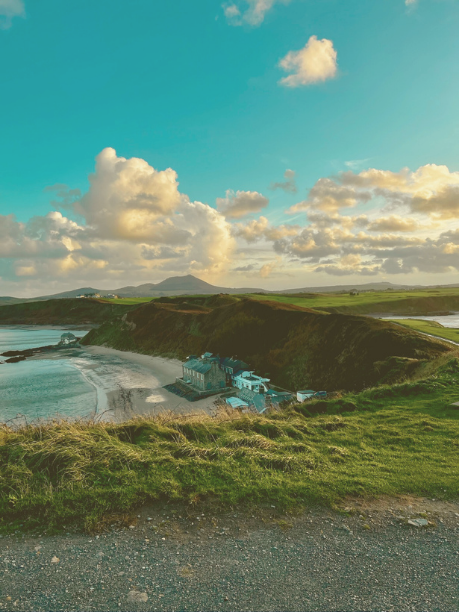
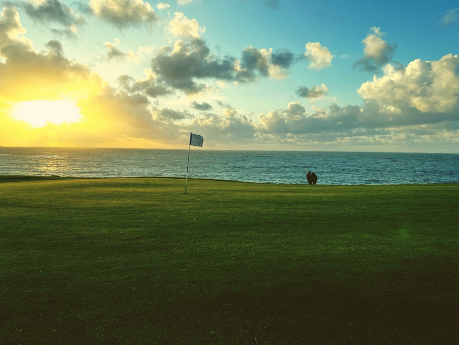
Porthmadog Golf Club
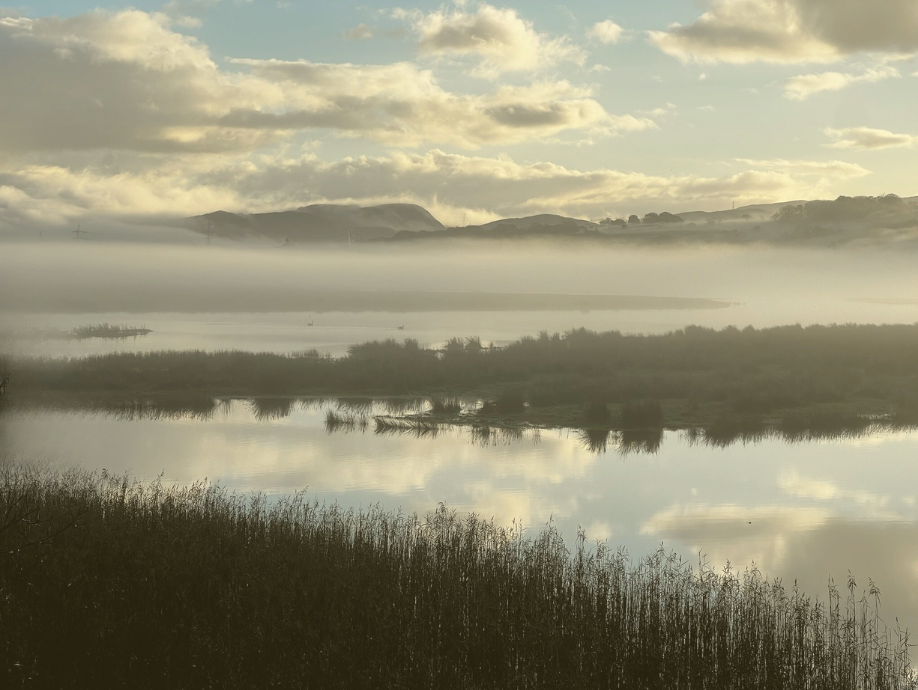
We based ourselves in Porthmadog, a coastal town we knew well from summers past spent as teenagers on family holidays. Porthmadog had once prospered as a port, exporting slate brought down from inland quarries on the Ffestiniog Railway line. Its terminus, Porthmadog Harbour railway station, now a hotspot for tourists and train enthusiasts, stood opposite our hotel.
It was the town’s course we hoped to play the next day, but a weather check confirmed the worst: the storm was fast approaching. Realising that my plans to celebrate my brother’s birthday were about to go awry, and being the guilt-ridden elder, I feverishly recounted our shots, and all of the day’s happenings, in a vain attempt to prolong our round, all the while silently cursing our bad luck and my foolishness for choosing a reliably unreasonable month to play.
We fell asleep to the sound of my mumbled commentary and the rain rapping on our window.
I awoke to my brother pottering about the room. He seemed buoyant, so I leaped at the curtains to find that the certain downpour and severe gales were nothing more than a light drizzle and a decent breeze: a perfectly fine day to tread the links. The weather warnings had been true for all but the small area of Wales we had chosen. The storm orbited us: an intervention of sorts, I thought.
We sat down to a hearty breakfast and delighted in poring over the day’s empty tee sheet. En route to the course, we were obliged to stand before and wave at Porthmadog Harbour railway station’s webcam for the delight of our beaming mother back home.
Porthmadog Golf Club is a James Braid design established in 1905. The front nine of Porthmadog is predominantly heathland and sits at the ankles of Moel y Gest, a prominent hill that serves as a wonderful backdrop. The back nine heads out to sea and is with immediacy a model of links golf, complete with stunning views of the Cardigan Bay coastline and Eryri mountain range.
You may be forgiven for discounting the front nine, so perfect is the back, but holes one through nine is a fun loop with a good handful of standout holes, including the par-3 6th and its island green.
The 10th, and what follows, however, is a whole other world. Here, dunes impose, bunkers deepen, fairways undulate, mounds obscure, and heather and gorse gobble errant shots. It is the kind of terrain that makes you grateful you ever decided to carry on swinging that stick.
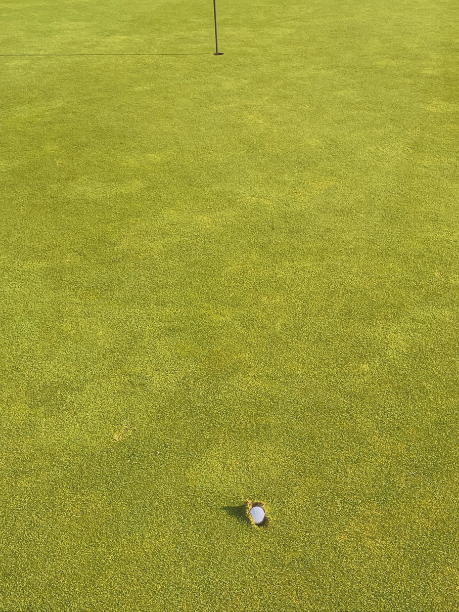
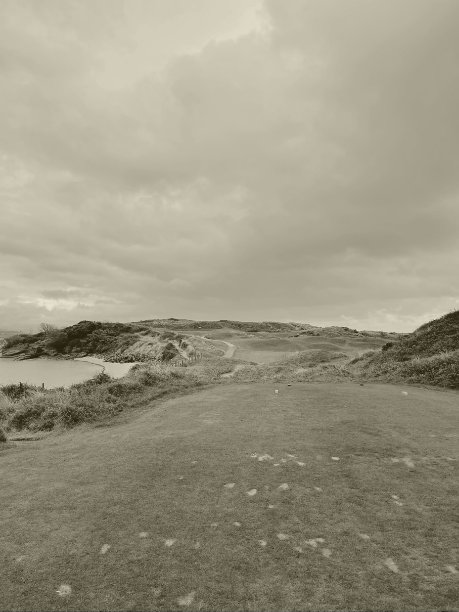
The club’s 12th, 13th, and 14th are showstoppers. The trinity of holes starts with a stare out across the estuary of the River Dwyryd to the subtropical gardens of the impish and flamboyant village of Portmeirion, a Baroque-style folly designed by the visionary architect Sir Clough Williams-Ellis.
Focus regained, the 12th is a short par-4 that hugs Samson’s Bay. It is played down to a small, sandy fairway, where balls must be teed up from here to protect the hole, and then up to a slim green cut high into a dune. My brother’s drive into the greenside bunker proved that it was indeed reachable; I thought it crude to take such a direct route, and instead mucked about for a good while in the mounds to the right of the fairway.
The 13th is a long, downhill par 3 played from the peak of the aforementioned dune to a green that is half-obscured by another dune. The marker post at the back of the green tells you all you need to know about how devilish this hole is.
“Himalayas”, the finale of the trio, is a long par 4 that demands a tee shot be carried and laced over and through yet more dunes to a fairway you pray is there. My brother saved his best golf of the day for these holes, which was particularly baffling to me as his timing, or usual lack of, has always caused great arguments between us.
Porthmadog, even with all its dunes, rabbit warrens, water hazards, and picturesque views, is a quick course. Perhaps it is the great juxtaposition of the two nines, its surprising ease of walk, or excellent turf, but of the three courses we played that trip, it’s the one I would happily play for evermore, though this is another ongoing argument between my brother and me.
Royal St. David’s Golf Club
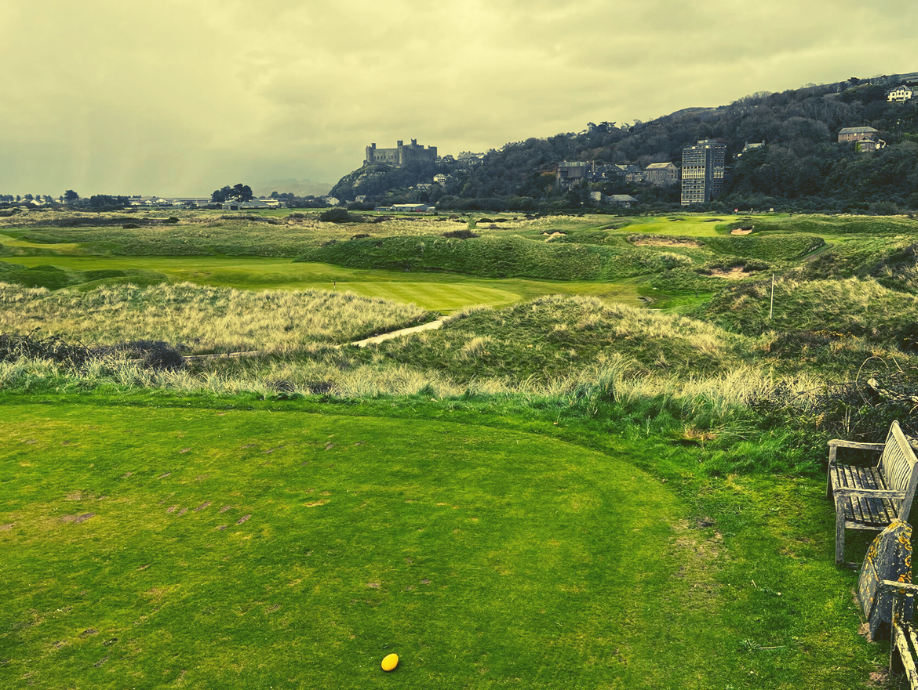
Our final round was played at Royal St. David’s, under the gaze of Harlech Castle, perched high on a rocky knoll. The Irish Sea once covered the land and lapped the castle’s fortifications, but the waters have long since retreated, leaving just enough room for a links to be squeezed in.
Golf at Harlech began in 1894 when William Henry More found the Honourable Harold Finch-Hatton throwing his boomerang to himself on the sandy grazing land. A conversation ensued and, as all good conversations end, a golf course was agreed. Despite lacking in experience, More would become, according to the great golf writer, Bernard Darwin, “just about the best golf club secretary in the world.”
The course has remained fairly faithful to the original, quickly conceived, and intricate routing, and has since hosted numerous amateur and professional tournaments.
The storm continued its orbit, flicking considerable rain and a healthy wind our way, but the course remained just about open. Its bunkers were out of play though, filled like baths, and puddles had gathered on some of the fairways, but its ‘just-out-of-the-shower look’ did nothing to distract from its grandeur.
Royal St. David’s is a superb windswept links, complete with nervy carries and glassy seaside greens — and all the while the sea whispers from behind a curtain of dunes that stretch the entirety of the course. It provides a tremendous test of golf in a wonderful setting, and with Harlech Castle standing sentinel above the course, and the enchanting Eryri mountain range in the distance, one’s thoughts can’t help but turn to dragons.
The front nine reminded me of Scotland — perhaps it was the distant forest of pines, its large, swinging greens, or seemingly wide-open fairways, but it felt very much like hallowed turf and a good home for golf. From the 12th, we played amongst the dunes to fairways that pinched in at all the right places and punchbowl greens that did their very best to gather our mediocre shots.
My brother chipped in for birdie on the short 14th, his first of the trip, and we celebrated as such. Skylarks and stonechats took flight at the sound of our high-fives and bravos. The 16th, the highest point of the course and a wonderful driving hole played towards train tracks and an incongruous grey tower block, almost offered us our first glimpse of the sea, but those sand hills are improbably lofty.
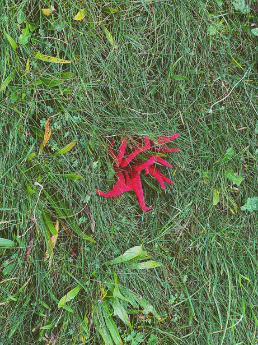
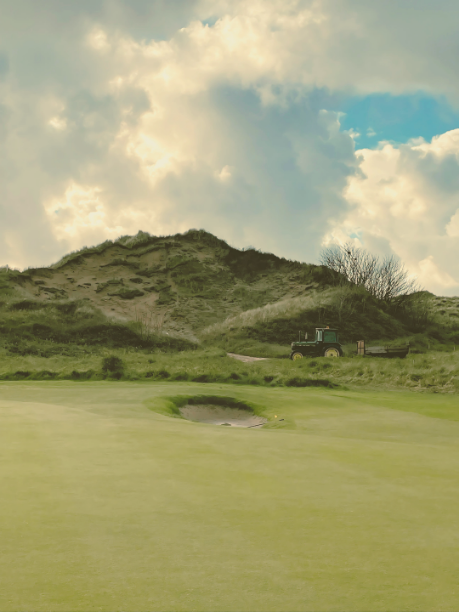
The course ends with a stressful par-3 played alongside the clubhouse and its large bay window. Never have I wanted more to avoid the hosel or to be left-handed, but thankfully, we both walked off with damage-free bogeys.
After some post-round tea, a round of toast, and a spot of earwigging members’ conversations, we made our way back to the car, but were summoned to the chipping green, unable to resist the tight links sod. A chipping contest ensued: up, down, across, and over we chipped until my brother holed one yet again. With that, we called it a day. We called it a trip well made.
I gifted my brother a trip to Wales for his 30th birthday. There, in the sublime county of Gwynedd, with its tangled history and myths of old, we enjoyed all the golf afforded to us.
By day, the weather threatened as we took aim at the sea and dunes and wandered the grassy tumbles. Ever present, the cold winds and rain tried their best to further complicate our strokes across perilous ground and pitfalls to distant, secure paths.
By night, storm warnings reminded us that the day’s play might be our last, but we soundly drifted off to talks of all things golf, lasting impressions of the landscapes and seascapes, and memories of shots that bounded, skirted, and charmed their way across uneven terrain.
Yes, our bags, grips, and clothes were soaked, and we were physically near defeated, but it was a small price to pay to be in and amongst an area of outstanding beauty. There aren’t many finer places to visit for lovers of links.


